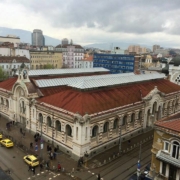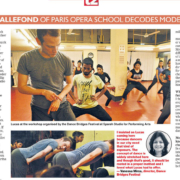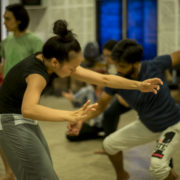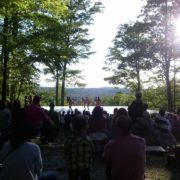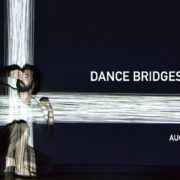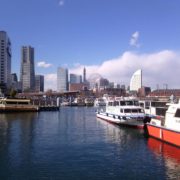Aerowaves & Spotlight USA 2018 (Bulgaria)
March 2018 saw the Dance Bridges team represented by Pierre Palluet and Vanessa Maria Mirza at two international dance platforms in Bulgaria. It was a great honour to be the only Indian Festival participating in both these prestigious international events.
Aerowaves’s annual festival Spring Forward festival was held in Sofia from 23rd-25th March, 2018 in collaboration with Derida Dance Centre. Aerowaves is an international forum representing emerging and exciting new talent in Europe with a partner network of 33 countries and promoting dance artists through cross-border performances. It was an exciting time as our team members met with performing arts professionals from different parts of Europe and interacted with several artists performing at the festival. Amongst these many meetings it was a great pleasure for our team to re-connect with artist Alfredo Miralles ,a part of the Springback Academy for writers. Alfredo was one of the artists who performed at Dance Bridges Festival 2017 in Kolkata.
Dance Bridges is grateful to Aerowaves for this invitation and hopes the connections made can develop into bring more work from Europe to India while building valuable artistic exchanges.
To read more about the event have a look at their website here: http://aerowaves.org/
Spring Forward was followed by 3 days of American dance showcases for Spotlight USA in Plovdiv from 26th-28th March 2018 in collaboration with One Dance Week. The programme had artists performing a wide range of pieces with panel disccussions and feedback sessions weaved into the schedule as well. As a second invitation from American Dance Abroad our team was delighted to meet with so many new artists as well as international programmers. We once again had a reunion with friends and connections from the dance world and thoroughly enjoyed our time in Plovdiv. Indeed we hope to continue to grow and expand our associations with American artists with even greater participation in Dance Bridges events through the years to come.
To read more about American Dance Abroad and their upcoming events, you can visit their website: https://americandanceabroad.org/

